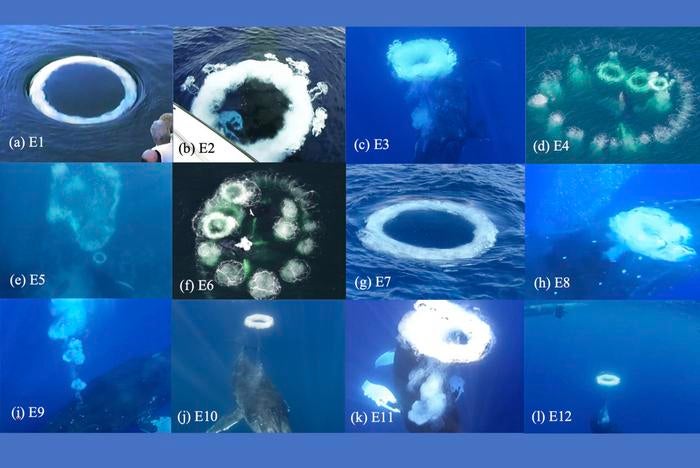Humpback whales have been documented for the first time creating large bubble rings in water during friendly interactions with humans, suggesting they could be trying to communicate with us.
The whales are known to use bubbles to hunt prey and when competing to escort females.
They don’t just produce these rings but also manipulate them in a variety of ways, actively controlling their size and depth.
A new study, published in Marine Mammal Science, hints that they could be trying to communicate with humans using the bubbles during friendly encounters.
“This important assumption is certainly supported by the independent evolution of curious behaviour in humpback whales,” said Laurance Doyle, an author of the study from SETI Institute.
Researchers have previously documented the whales living in complex societies and using their ring bubbles to assist other species harassed by predators.
The bubble rings are described by researchers as spinning, air-infused vortices that look like “giant smoke rings” about a metre in diameter.
The whales often exhibit inquisitive, friendly behaviour towards boats and human swimmers. "Now, akin to a candidate signal, we show they are blowing bubble rings in our direction in an apparent attempt to playfully interact, observe our response, and/or engage in some form of communication,” study co-author Fred Sharpe said.
"We've now located a dozen whales from populations around the world, the majority of which have voluntarily approached boats and swimmers blowing bubble rings during these episodes of curious behaviour,” said Jodi Frediani, another author of the study,
In the study, researchers analysed 12 humpback whale bubble ring production incidents, totalling 39 rings made by 11 individuals. They categorised the whales into known age classes: yearling; 4-6 years old subadult; and adult.

In many of these instances, during ring release, the whales were motionless or slowly idling forward “with blowholes held upright and the body mostly in the horizontal position”.
“None of the other ten episodes were associated with feeding behaviour nor were prey organisms noted within rings,” the researchers noted.
They also confirmed that none of the observed whales expressed any aggressive behaviour towards a boat or a human swimmer.
In a majority of the observed incidents the ring blowing whale was alone, suggesting that the intended recipient wasn’t another whale.
“Ring generation during inquisitive encounters adds to the humpback whale's diverse interspecies behaviours,” the scientists wrote.
The findings are also intriguing since researchers believe interacting with the humpbacks can be a proxy for communicating with aliens.
Studying these whale interactions can offer valuable insights into non-human intelligence and potentially help refine methods for detecting extraterrestrial life, scientists say.
“More research is needed to systematically study bubble ring production and ascertain under what conditions bubble rings are consistently produced,” they said.
Sightings soar on Australia’s ‘humpback highway’ as 40,000 whales return for winter
Viking woman from 10th century found buried with her dog and boat
NASA shuts down X accounts as fears swirl about massive cuts to science initiatives
Older millennials are increasingly getting this rare cancer type
Secrets of sauropod dinosaur revealed by fossilised stomach find
1,500-year-old Byzantine tomb complex discovered under Syrian war ruins







